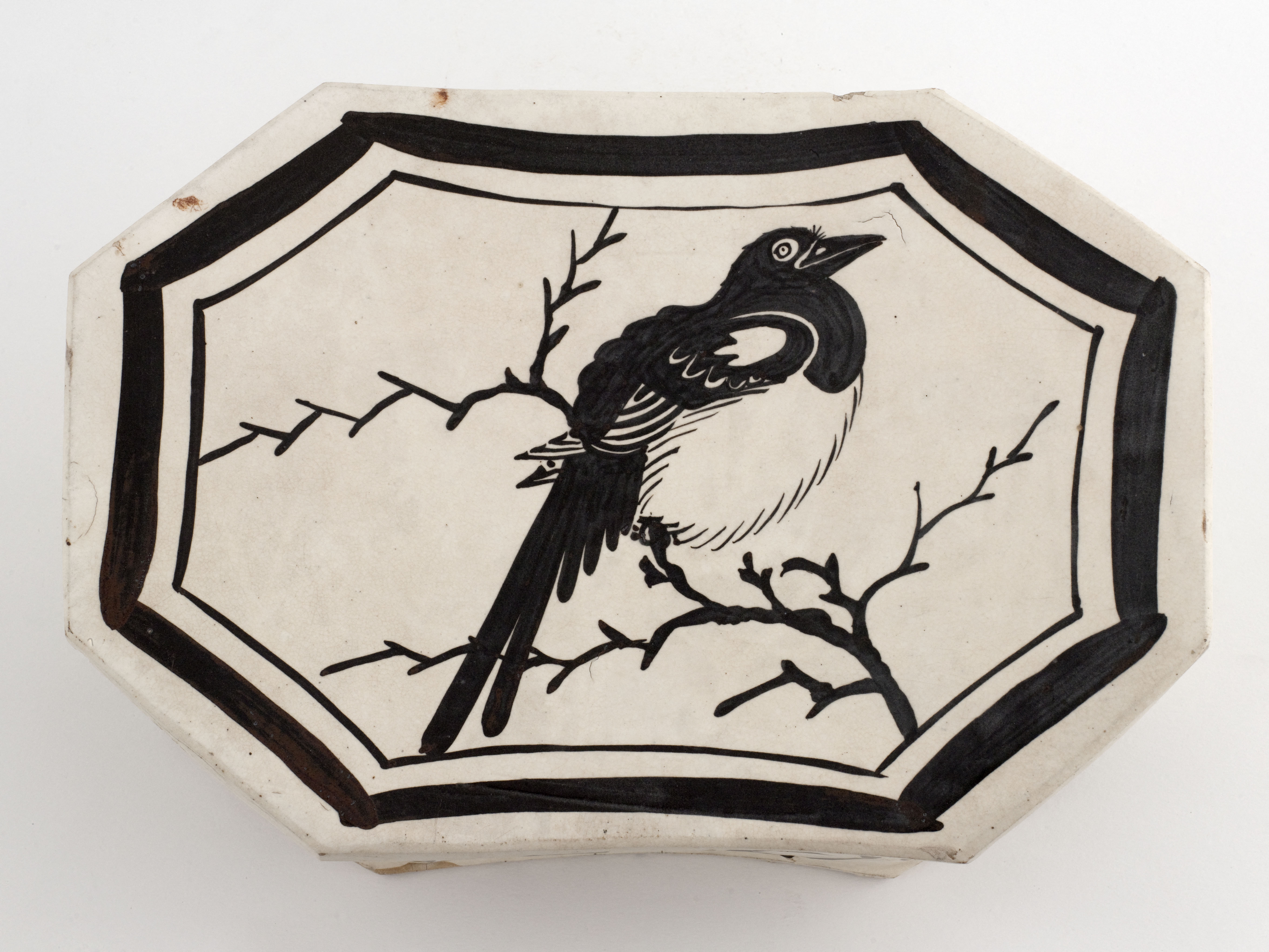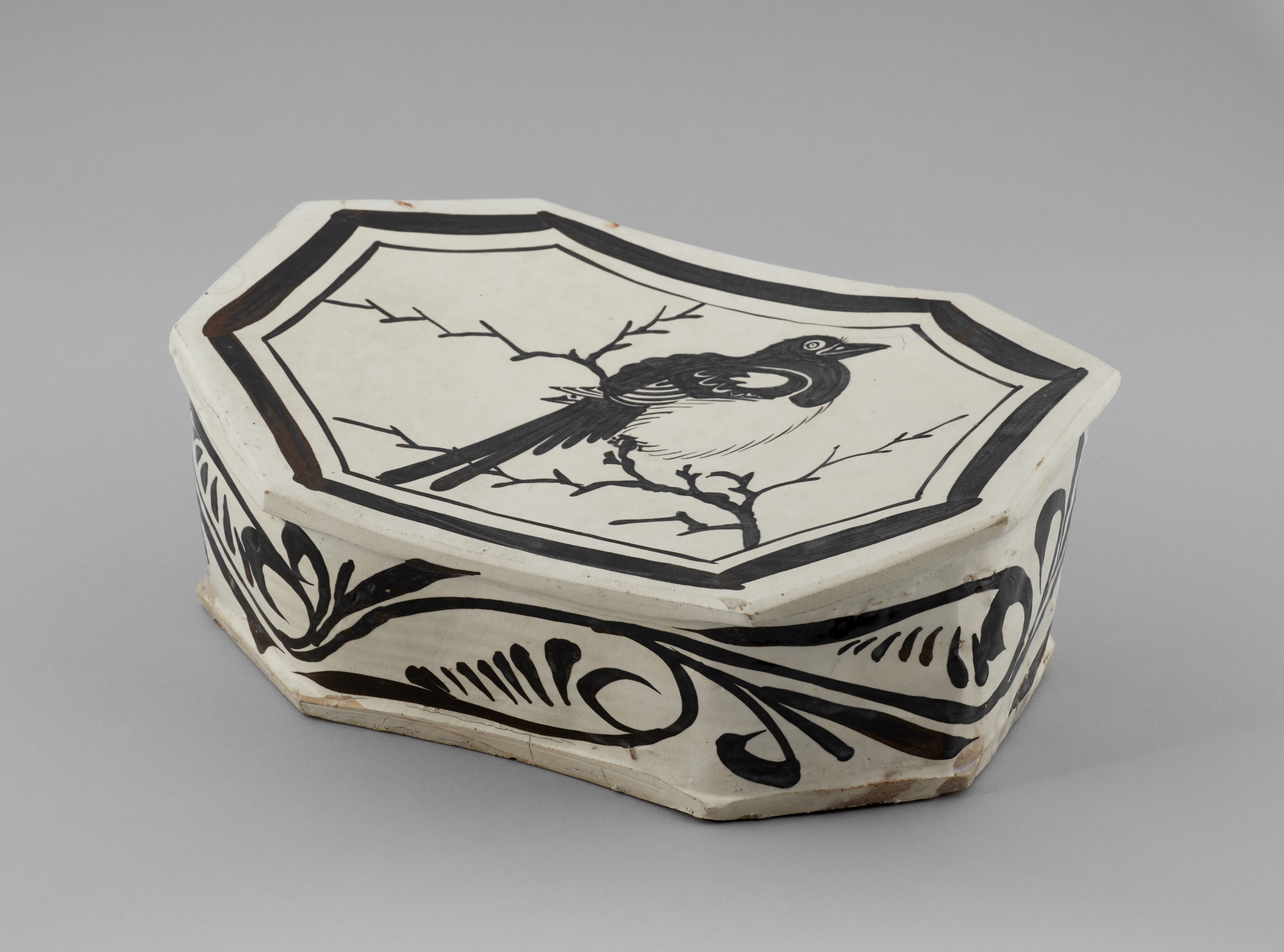
Oreiller
Grès, Moulage, Engobe, Glaçure = Couverte, Décor peint sous couverte
Oreiller
Au revers, trois caractères gravés au sceau : "Zhang kia tsao" 張 家 造
Don manuel : Société des Amis du musée Cernuschi
M.C. 9241
This octagonal pillow in light beige stoneware is made of a quite rough clay containing visible brown particles. This rustic material, typically used for commonplace items in daily use, required the application of a cream-coloured engobe to mask imperfections and serve as a ground for the design, painted in brown engobe under a transparent glaze. This technique characterising the largest group of Cizhou stoneware appears to have emerged in the 12th century after the fall of the Northern Song (1127). The base left unglazed bears the mark Zhang jia zao (“made by the Zhang family”) inside a rectangular cartouche. A small hole made at the back enabled the air to escape during firing.
Octangular pillows can be divided into two types. In one of them, the top part leaning to the front extends slightly over the sides; in the other it does not. The Cernuschi Museum pillow has all the characteristics of the former. The decorative motif adorning the top of the pillow is bordered by a double line, thick on the outer edge and thin on the inside. The sides of the pillow are painted with a very free swirling plant motif. Fragments of pillows with a similar border have been excavated at the Dong’aikou kiln.
The bird is the most common motif on this type of pillow. There is a comparable specimen at the Montreal Museum of Fine Arts (Mino, 1980, pp. 116-117, pl. 46); it also carries the mark Zhang jia zhen (“pillow of the Zhang family”), indicating that it was produced by the same workshop as the Cernuschi Museum piece. The magpie is an auspicious bird in China, which is why it was often chosen as a decorative motif.
The theme itself echoes the bird-and-flower painting favoured by Huizong (1100-1125), the last emperor of the Northern Song, and this type of composition would have been disseminated through woodblock prints, still a flourishing medium. It is found on several pillows from Yuxian in Henan and from Changzhi in Shanxi with a base in the form of a tiger. One of them, in the Shanghai Museum, is dated to the second year of the Dading period of the Jin dynasty, that is, 1162 (Shanghai bowuguan, 1996, cat. 30).
Mino, Yutaka, Freedom of clay and brush through seven centuries in Northern China: Tz’u-chou type wares 960-1600 A.D., Bloomington: Indiana University Press, 1980
Zhongguo gudai taoci guan (Ancient Chinese ceramic gallery), 1996, Shanghai: Shanghai guji chubanshe



